Louis XIV of France, also known as the Sun King, is one of the most important figures in European history. An encrypted letter he wrote in 1693 has never been deciphered.
French autograph dealer David Chelli has made me aware of a truly spectacular unsolved cryptogram: an encrypted letter written by French king Louis XIV to the Duke of Chaulnes in 1693. Louis XIV (1638-1715), who is also known as the Sun King, is generally regarded as one of the most important persons in European history.
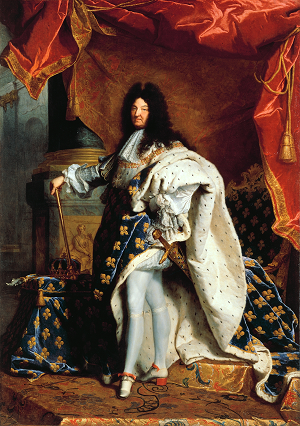
This encrypted letter written by Louis XIV is described on a French website. It played a role in the so-called Regalian Affair – an epsiode in history I had never heard of before. A regalian right is a right that belongs exclusively to the king. Here is what Wikipedia writes about the Regalian Affair:
On 10 February 1673, Louis XIV issued a declaration, extending the droit de régale [the regalian right] over all France. The Parliament was pleased, and most bishops yielded without serious protest, only Nicolas Pavillon, of Alet, and François de Caulet, bishop of Pamiers, both Jansenists, resisting. These at first sought redress through their metropolitans, but when the latter took the king’s side they appealed, in 1677, to Pope Innocent XI. In three successive Briefs the pope urged the king not to extend the right to dioceses that had previously been exempt. The General Assembly of the French clergy, held at Paris in 1681-2 sided with the king, and, despite the protests of Innocent XI, Alexander VIII, and Innocent XII, the right was maintained until the French Revolution.
In 1693, Louis XIV sent the Duke of of Chaulnes to pope Innocent XI. The encrypted letter contained instructions for the Duke. As it seems, this letter has not been deciphered to date.
The letter
The letter sent by Louis XIV consists of five pages. Only parts of it are encrypted.
#1:
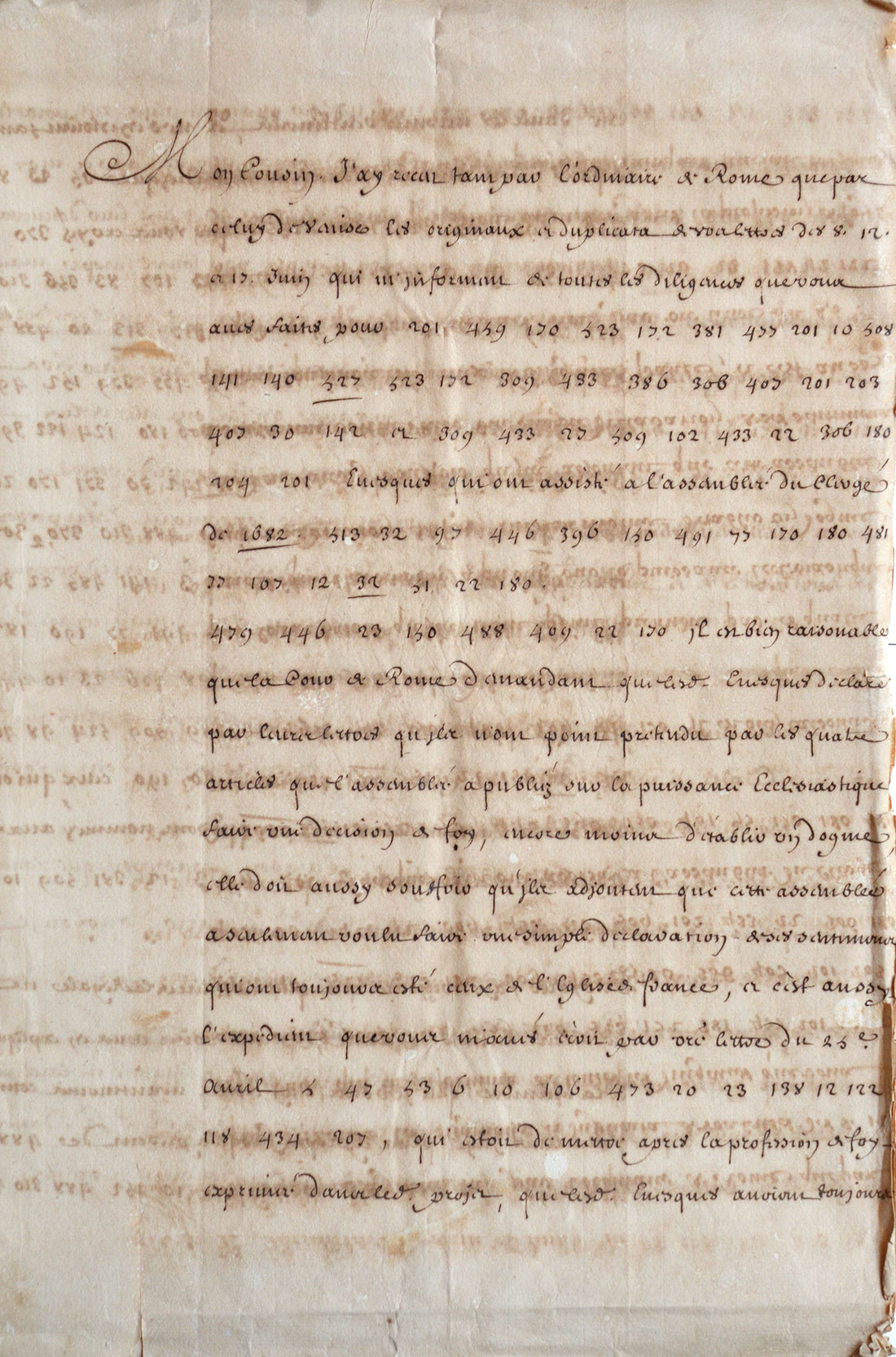
#2:

#3:
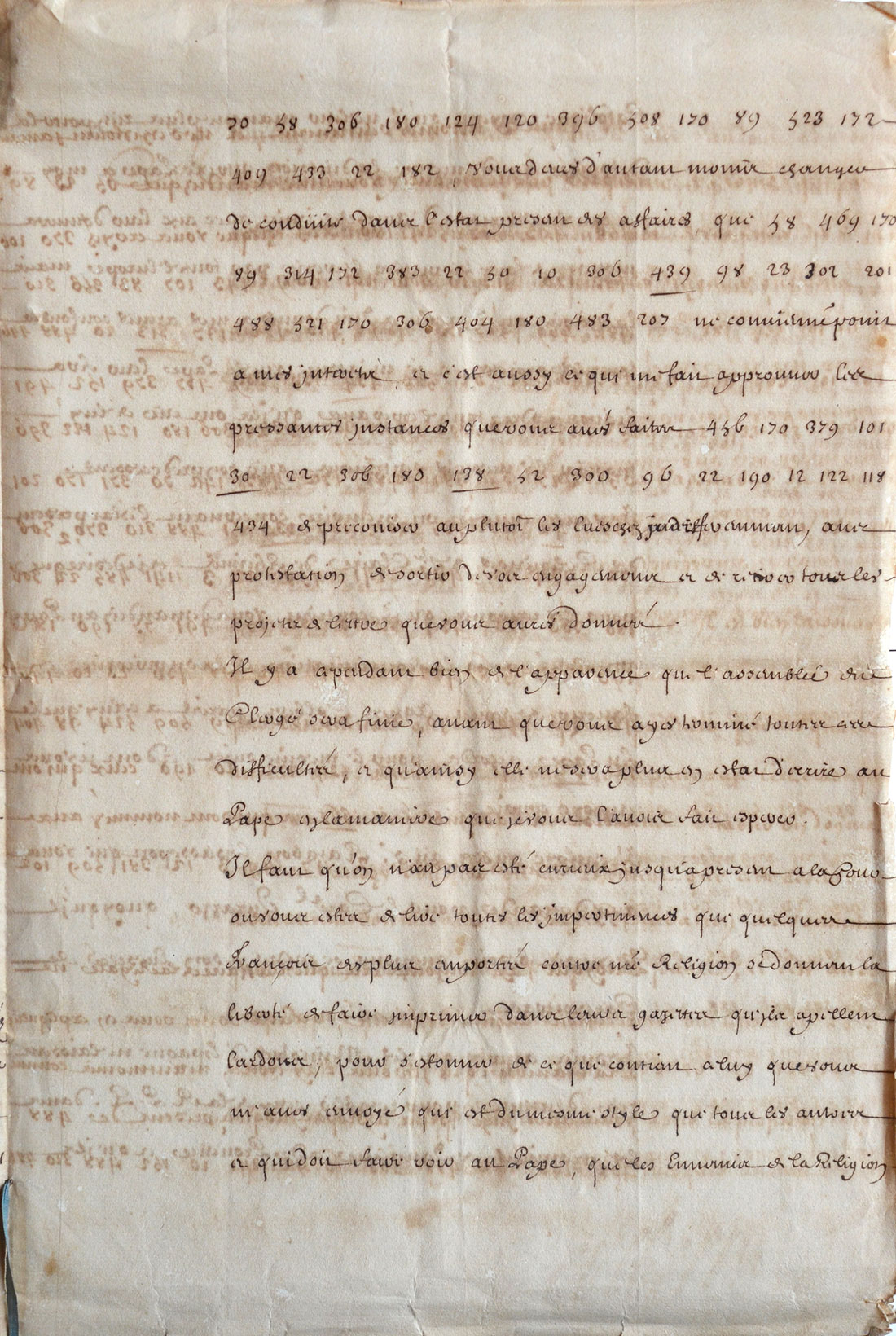
#4:
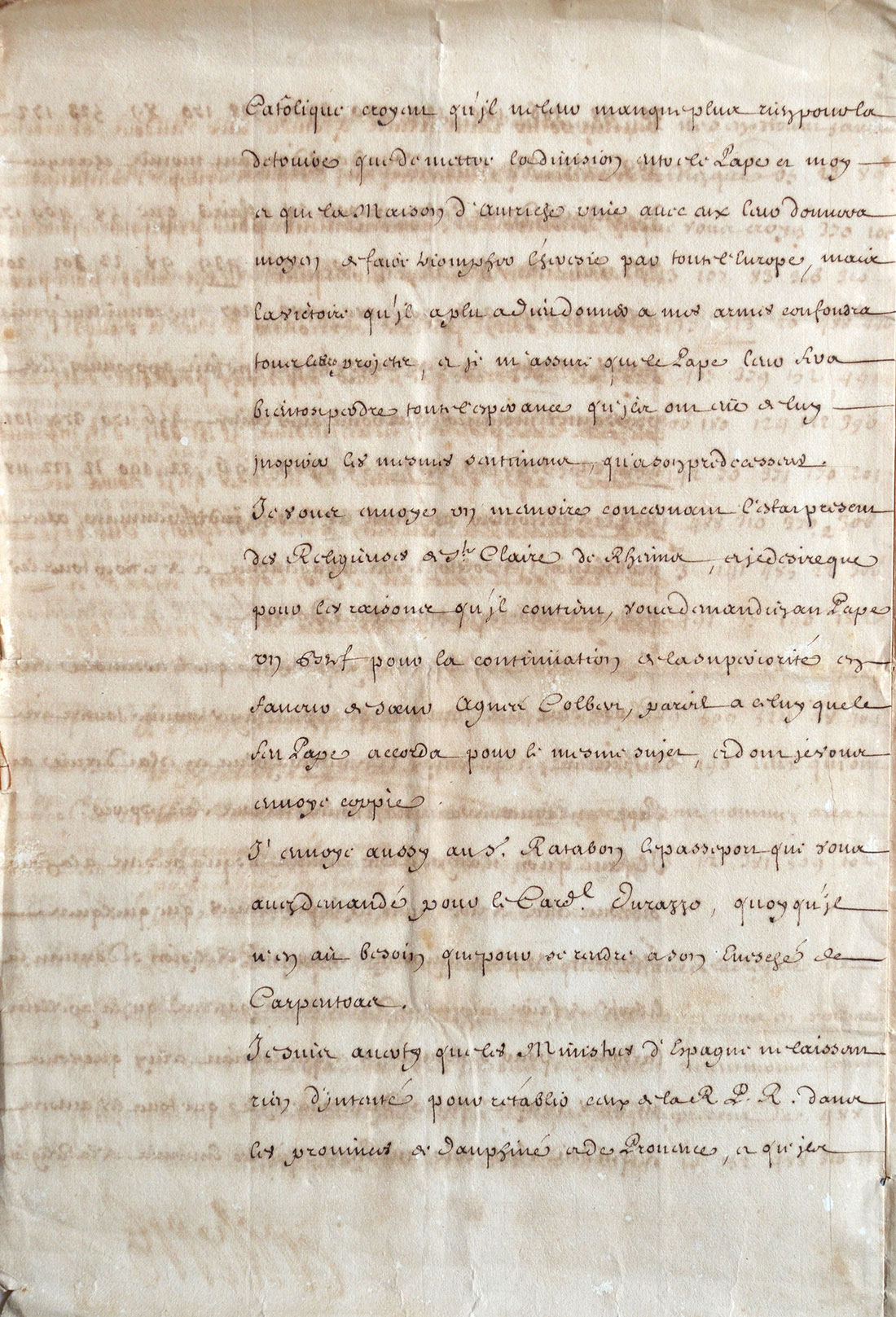
#5:
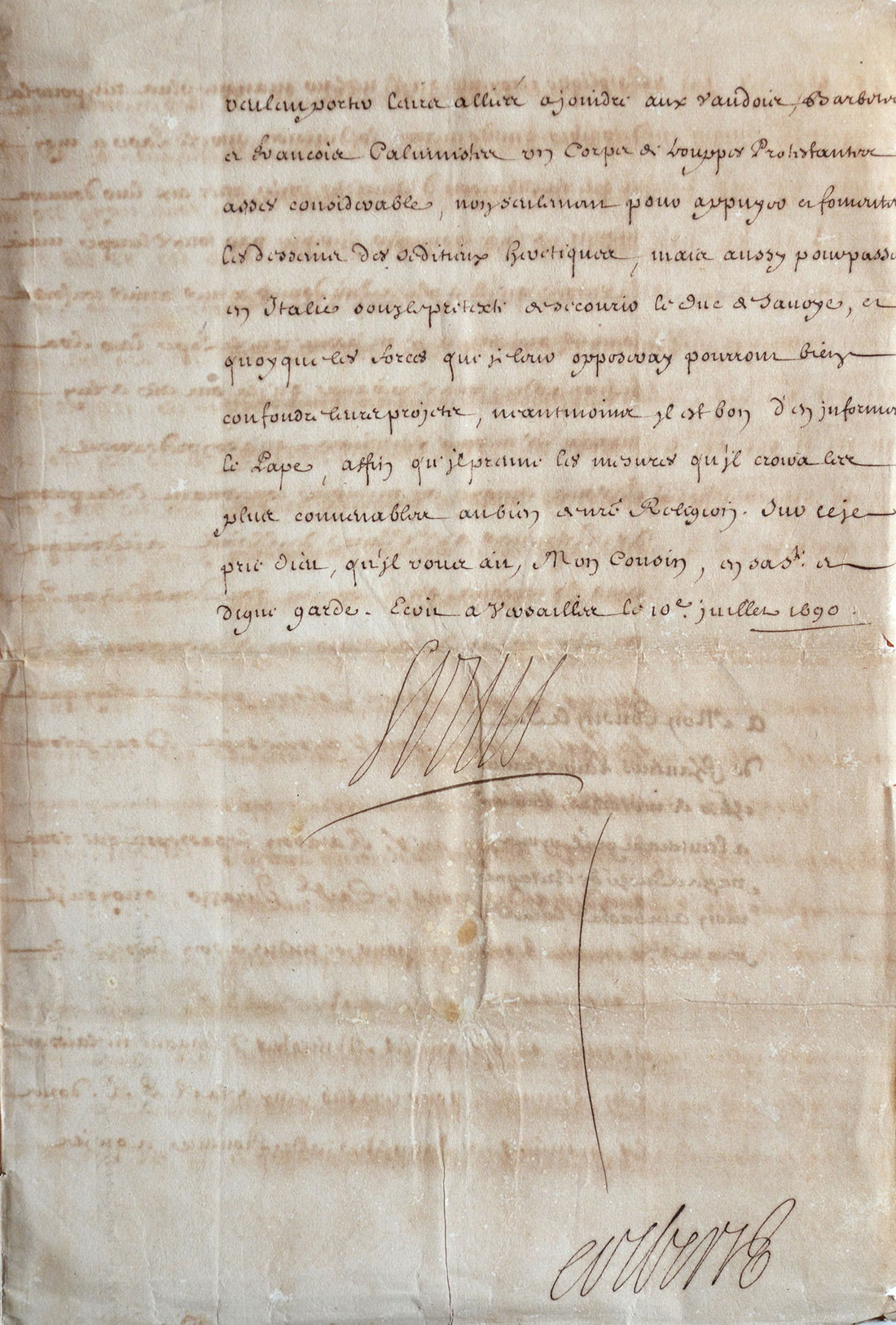
Deciphering approaches
Frequent readers of this blog will easily recognize with what kind of method this letter has been encrypted: with a nomenclator. A nomenclator is an encryption method based on a substitution table that replaces each letter of the alphabet and some frequent words with a number (or another character sequence). The following is a very simple example:
A=1
B=2
C=3
…
Z=26
London=27
Paris=28
Rome=29
today=30
tomorrow=31
Using this nomenclator the plaintext WILL TRAVEL FROM LONDON TO PARIS TOMORROW encrypts to:
23 9 12 12 / 20 18 1 21 5 12 / 6 18 15 13 / 27 / 20 15 / 28 / 31
For centuries, nomenclators were by far the most popular encryption method. The following French nomenclator is from the 17th century (it is contained in the paper Briefe durch Feindesland published by Gerhard Kay Birkner in the proceedings of the conference Geheime Post).
As mentioned many times on this blog, breaking a nomenclator message is far from easy. Most unsolved nomenclator messages I have introduced over the last five years have not been solved by my readers – though the success rate is usually quite high. As far as I know, there is currently no codebreaking expert in the world who specilizes in breaking nomenclators. I hope, this will change some day.
Anyway, it’s worth a try. The first question is, of course, whether the solution of this cryptogram is already known. I’m sure, people have tried to break this message over the last three centuries, and perhaps, somebody was successful.
The second question is whether the nomenclator used by Louis XIV can be found. Perhaps, it can be located in a French archive.
If the nomenclator is not known, there are still ways to break such a message. Many nomenclators were poorly constructed (for instance, two-digit numbers stood for the letters, while three-digit numbers represented words). Very often, weaknesses of this kind can be exploited.
Solving this mystery is a difficult task. Anyway, there is a chance that my readers will be successful. I’m lookig forward to your comments.
Follow @KlausSchmeh
Further reading: An unsolved cryptogram by a German conquistador
Linkedin: https://www.linkedin.com/groups/13501820
Facebook: https://www.facebook.com/groups/763282653806483/

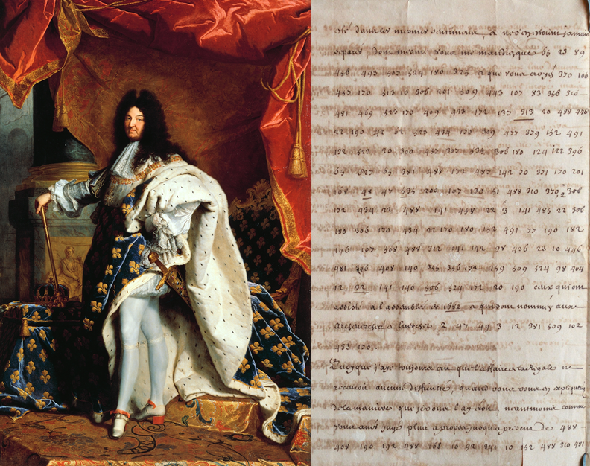
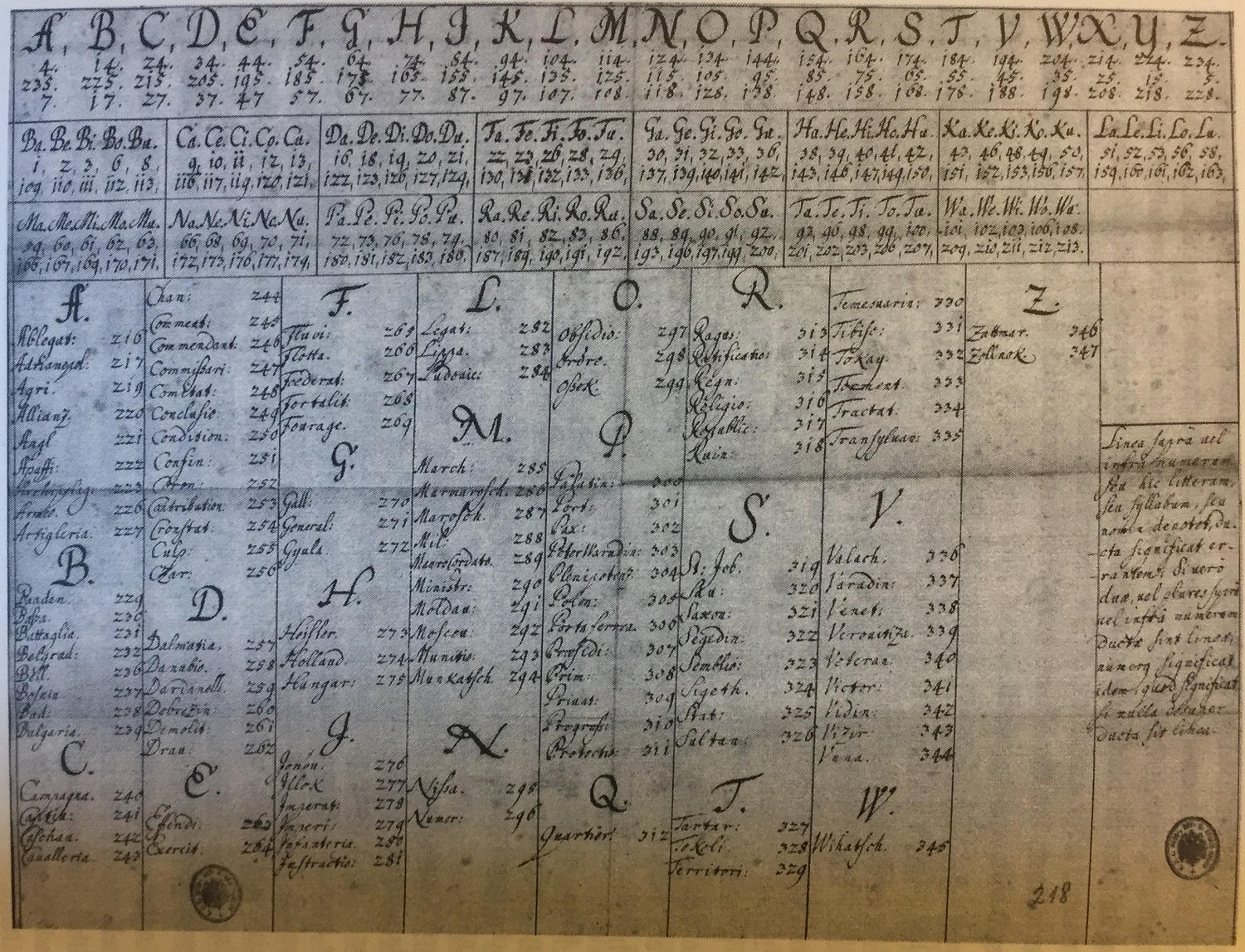

Kommentare (13)